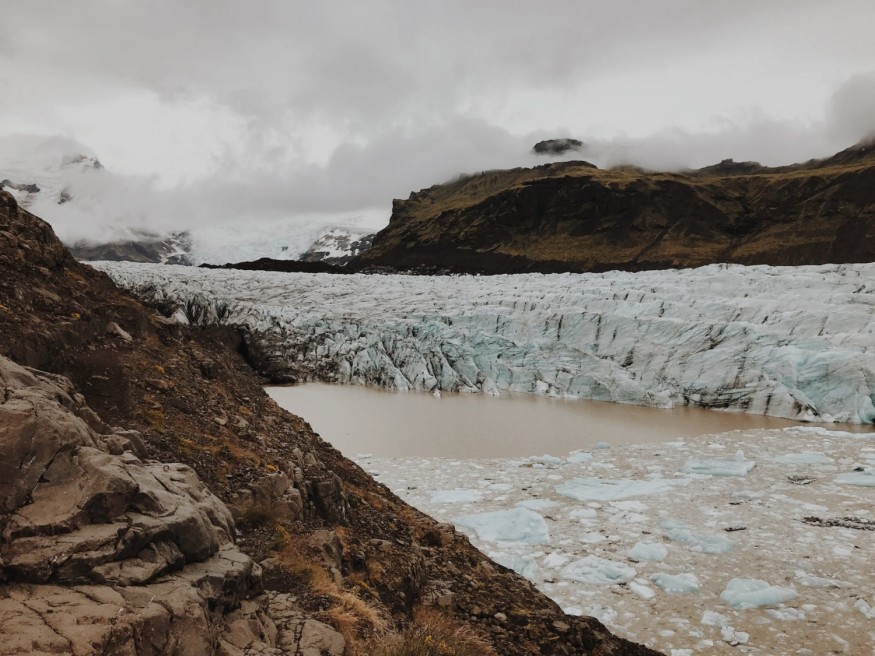
Climate researchers predict that global temperatures will increase by as much as 2 degrees C by 2050 due to growing concentrations of greenhouse gas emissions in the planet's atmosphere.
But for many of the world's urban areas, a temperature rise due to the burning of fossil fuels isn't the half of it.
A new study from the Yale School of Forestry & Environmental Studies (F&ES) projects that the growth of urban areas in the coming decades will trigger "extra" warming due to a phenomenon known as the urban heat island effect (UHI). According to their findings, urban expansion will cause the average summer temperature in these areas to increase about 0.5 to 0.6 degrees C -- but up to 3 degrees C in some locations.
This warming, they show, will increase extreme heat risks for about half of the world's future urban population -- particularly in tropical regions in the Southern Hemisphere, where climate models already project stronger warming due to greenhouse gas emissions and where there is less capacity for adaptation. In these vulnerable regions, the authors argue, policies that restrict or redistribute urban expansion and planning strategies that mitigate UHIs are needed to reduce the effects on human health, energy systems, ecosystems, and urban infrastructure.
"We know that 60 to 70 percent of the world's population will be living in urban areas by midcentury," said Kangning Huang, a Ph.D candidate at F&ES and lead author of the paper published in Environmental Research Letters. "So if you don't know the change in urban heat island and you only focus on climate change from greenhouse gas-emissions, then you are underestimating the level of warming and heat that two-thirds of the global population will be exposed to."
The paper was co-authored by Karen Seto, the Frederick C. Hixon Professor of Geography and Urbanization Science at F&ES, as well as Xia Li from East China Normal University in Shanghai and Xiaoping Liu from Sun Yat-Sen University in Guangzhou, China.
According to the authors, this research represents an important step toward understanding the future of urbanization. Although the UN's World Urbanization Prospects has offered a trove of data on future urban population growth, it lacks specific information on how that growth will be distributed within countries and the changes in land uses.
Moreover, although the UN Intergovernmental Panel on Climate Change reports incorporate modeling studies on future warming due to greenhouse gas emissions, they do not provide global-scale projections of warming as a consequence of increasing UHIs.
The urban heat island effect is a phenomenon in which urban areas are significantly warmer than the surrounding countryside, inducing local climate effects that compound the global effects of greenhouse gas emissions.
In the new study, the authors predict the likely distribution of urban population growth based on range of factors including economic growth, topography, and transportation networks assuming a continuation of historical trends in urban expansion. Then, using mathematical models, they forecast the intensification of the urban heat island effect down to local and regional scales. (The model produces spatial results at a resolution of five square kilometers.)
"If you want to do a comprehensive assessment of the risk of warming, you need to have this information," Huang said. "Climate impacts depend on location; it will be different, for instance, from Florida to California. So it's important to know where people are living and the resulting size of the urban areas."
Likewise, any future policy decisions will be dependent on local and regional conditions, he said. Although the paper doesn't make policy recommendations, it offers policymakers and scientists across the world a glimpse into what the future might look like in their regions, and an opportunity to craft policies that respond to those projections.
Among other findings, they report that more than 70 percent of new urban lands will concentrate in the more humid temperate and tropical zones. In North America and Europe, urban expansion will take place in temperate and cold zones, while in China, most of the expansion will occur in temperate zones in the country's eastern and southern sections. In Latin America, Southeast Asia, and Sub-Saharan Africa, the majority of new urban areas will be located in tropical zones.
While the UHI effects of this urban land expansion will vary largely across climate zones and regions, the hottest cores of medium-sized urban clusters (defined as 100 to 5,000 square kilometers) will see daily summertime temperature increases of 1 to 3 degrees C in some places. (According to their findings, the rise in UHI tends to rise most steeply as urban areas each a size of 100 square kilometers and then plateau at about 5,000 square kilometers: in other words, large cities typically have already reached their "heat island" plateau.) Many of these mid-sized cities, the authors note, may lack the capacity to adapt to stronger warming in comparison with larger cities.
The authors also estimate that urban areas will increase by up to 1.3 million square kilometers between 2015 and 2050, an increase of 171 percent over the global urban footprint in 2015. This would be the equivalent to building a new city the size of New York City every eight days for the next 35 years. More than 70 percent of the new urban lands will be concentrated in humid temperate and tropical zones, primarily in Asia and Africa.
These findings will help complement a growing body of research into the potential effects of a warmer, more urbanized world, Seto said.
"This is the first and only study that projects urban land expansion globally through 2050. It fills a critical knowledge gap in understanding the resource demands of future urbanization, such as for land, energy, materials," she said. "At the same time, this study also helps us understand how cities can modify their local environment to mitigate the impacts of urban-induced changes in local and regional temperatures."
© 2025 NatureWorldNews.com All rights reserved. Do not reproduce without permission.





